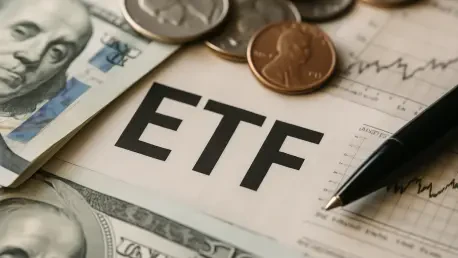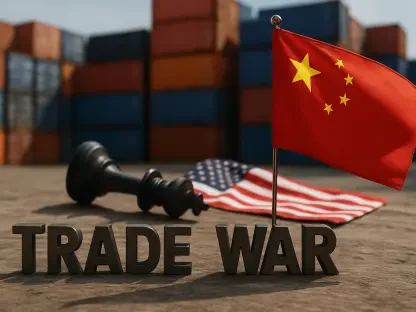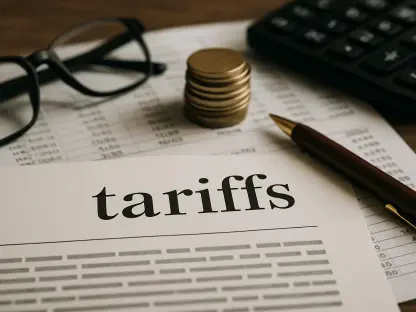In recent years, the dynamics of global commodity markets have been greatly affected by geopolitical events, leading to price volatility. This has renewed interest among investors in commodity-based investment vehicles as a viable option to hedge against market uncertainties. Commodity exchange-traded funds (ETFs) have become an attractive choice for those looking to engage in short-term trading without the burden of directly managing physical assets. These financial instruments offer exposure to a range of commodities without requiring storage solutions or significant initial capital. As geopolitical tensions involving major global players like the U.S., Iran, and Israel continue to influence commodity prices, understanding the operational nuances and strategic benefits of commodity ETFs could provide investors with advantageous short-term opportunities.
Understanding the Mechanics of Commodity ETFs
Commodity ETFs allow investors to indirectly participate in the commodities market by tracking their prices through futures contracts, rather than owning the commodities themselves. A futures contract is a standardized agreement to buy or sell a specific quantity of a commodity at a predetermined price at a future date. This mechanism enables ETFs to mirror the price movements of commodities, offering a convenient and cost-effective method of gaining exposure to these markets.
However, it’s important to distinguish between spot prices, the current market price of a commodity, and futures prices, which anticipate future market movements. This distinction often causes discrepancies due to contango, a situation where futures prices exceed spot prices. In contango markets, commodity ETFs can experience negative roll yield, a condition that arises when an ETF sells off expiring contracts and buys newer ones at a premium, leading to potential asset erosion. For short-term investors, it means that understanding and timing these futures markets are crucial to maximizing returns.
The tax implications associated with commodity ETFs add another layer of complexity. These funds are often classified as commodity pools, requiring the issuance of Schedule K-1 forms, which can complicate tax reporting and potentially lead to state-level tax obligations. Recognizing these tax nuances is vital for short-term investors to avoid unexpected liabilities and to streamline their tax processes effectively.
Strategies for Short-Term Investments in Commodity ETFs
Given the inherent complexities in the structure and operation of commodity ETFs, they are often deemed more suitable for short-term tactical plays rather than long-term holds. Short-term investors benefit from timely movements in futures prices without getting bogged down by the extended risks of contango or deferred tax obligations. This approach allows investors to capitalize on predicted short-term increases in commodity demand, aligning their ETF selections with market forecasts to optimize returns.
Investors should carefully select commodity ETFs by prioritizing those that mitigate notable risks such as leverage, inverse exposure, and intense focus on a single commodity. By opting for long-only ETFs that encompass a broad spectrum of commodities, including energy, metals, and agriculture, investors reduce susceptibility to the erratic price swings of individual commodities. This diversified approach not only minimizes risk but also provides better stability and predictability in returns for short-term investors.
Liquidity and fund reputation are increasingly significant metrics in evaluating a commodity ETF. Funds that possess substantial liquidity, indicated by lower bid-ask spreads, diminish trading costs, which in turn enhances return predictability. Moreover, ETFs with substantial assets under management tend to be more credible and stable, as they attract more investor confidence.
Trends and Considerations in Commodity ETF Selection
The landscape of commodity ETFs has evolved, with investors favoring funds that simplify tax reporting by avoiding those requiring Schedule K-1 forms. This shift not only eases filing processes but also mitigates potential complications from state-level taxes, thus enhancing the appeal of ETFs. Alongside tax simplicity, investors also focus on reputable funds that maintain high liquidity, reflecting minimal trading spreads and substantial daily volumes.
Against this backdrop, expense ratios, although significant in other investment products, take a backseat in commodity ETF evaluation. The intricate nature of these funds naturally entails higher costs. Therefore, higher priority is given to fund size and stability rather than fee structures. As such, those with considerable AUM and consistent performance records are preferred by investors seeking reliable returns.
As commodity ETFs continue to transform within this complex yet promising market, investors must remain aware of broader market trends and economic indicators affecting commodity prices. This awareness, coupled with strategic fund selection, positions investors to take advantage of ever-present market opportunities within the intricate web of geopolitical influences and commodity price fluctuations.
Positioning for Success in the Commodity Market
Commodity ETFs grant investors indirect access to the commodities market, tracking price movements through futures contracts rather than physical ownership. Futures contracts are standardized agreements that dictate buying or selling a predetermined amount of a commodity at a specific price on a future date. This allows ETFs to replicate commodity price fluctuations, offering a seamless and efficient way to engage with these markets.
Understanding spot and futures prices is crucial, as they can differ due to contango, a scenario where futures prices are higher than spot. Contango can cause negative roll yield in commodity ETFs, which happens when old contracts are sold at a lesser price and new ones bought at a premium, leading to asset decline. For short-term investors, grasping the dynamics of futures markets is key for optimizing returns.
Additionally, commodity ETFs often require Schedule K-1 forms for tax purposes, being classified as commodity pools. This may complicate tax reporting and create state tax obligations. Recognizing these complexities is essential for streamlining tax processes and preventing unforeseen liabilities.









